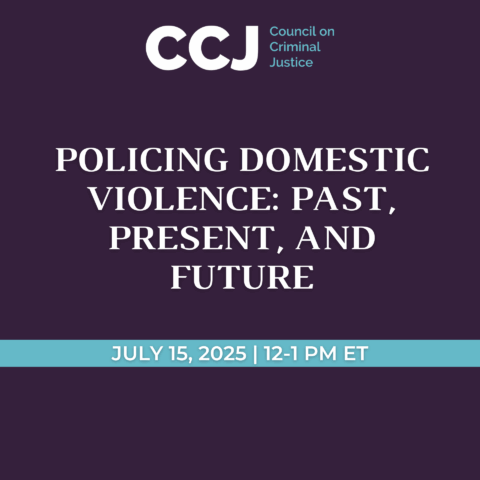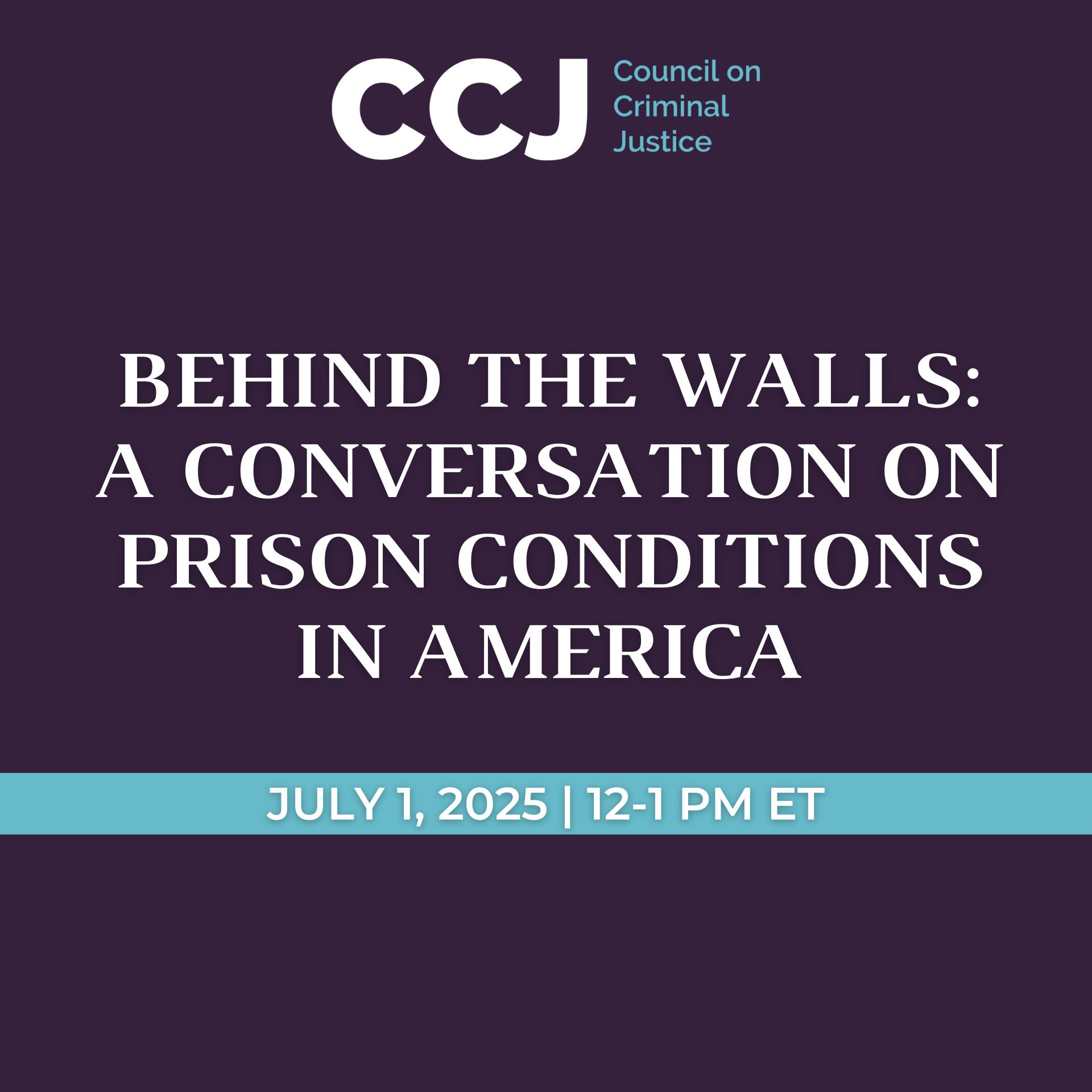Highlighting Key National Trends and Differences by Race and Jurisdiction, Package Presents a Statistical Portrait of Policing as Cities, States, and Congress Eye Reforms
5:00 a.m. ET, February 11, 2021
Contact: Jenifer Warren
jwarren@counciloncj.org
916-217-0780
WASHINGTON, D.C. – The Council on Criminal Justice Task Force on Policing today released a comprehensive collection of data on law enforcement in America. The package provides a statistical portrait of more than 30 key national trends at a time when policing reform is a priority for President Joe Biden and on the public agenda in virtually every state and local community.
Using data that, in some cases, stretches back 40 years, the report, Policing by the Numbers, covers trends across a broad range of topics, including the composition of police ranks, police spending, crime and victimization rates, police-involved killings of civilians, officers killed and assaulted in the line of duty, arrest and clearance rates, and public perceptions of law enforcement.
Highlights include:
- Black people remain far more likely to be arrested for violent and drug crimes than White people, but disparities in arrest rates have narrowed. The disparity in arrest rates for drug offenses dropped from a high of 4.9-to-1 in 1991 to a low of 2-to-1 in 2019.
- Inflation-adjusted spending on police nearly tripled between 1977 and 2018, but law enforcement accounts for a small share (about 3.7%) of total state and local government expenditures, and that portion has remained virtually unchanged for four decades. This indicates that spending on other functions, such as K-12 education, postsecondary education, public welfare, healthcare, and roadways, has increased along with police expenditures over time.
- Three quarters of people killed by police are White, but Black people are four times more likely and Hispanic people are two times more likely than White people to be killed by police.
- Growth in the total number of sworn police officers has not kept pace with growth in the U.S. population, but the number of officers per reported serious crime has nearly doubled.
- The share of Hispanic, Black, and female officers in local police agencies increased between 1987 and 2016. The proportion of Hispanic officers quadrupled to more than 12% but remains below the share of Hispanics (18%) in the general population. Black people make up about 11% of the total force and 13% of the U.S. population, while women now are about 12% of law enforcement ranks.
- Black people are slightly more likely than members of other racial groups to report to police that they have experienced a crime. But in public opinion polls, they report having much lower levels of confidence in the police.
- Just 14% of Americans want police to spend less time in their neighborhoods, according to a survey taken about a month after George Floyd’s death, with Asian Americans (28%) the most likely to say they’d like less police presence. Large majorities of people of all races prefer that police spend the same or more time in their areas.
“To develop solutions that will improve the fairness and effectiveness of policing, we need to begin with a solid foundation of facts,” said Task Force Executive Director Nancy La Vigne. “This collection of data provides that, and it will fortify efforts by the Task Force to identify reforms that can help agencies reduce the use of excessive force and rebuild community trust.”
“So many discussions about American policing are based on assumptions that are dated or otherwise at odds with the reality on the ground,” said Council on Criminal Justice (CCJ) President and CEO Adam Gelb. “This catalog of charts establishes central facts and trends that provide critical context for the debates that are happening now in Washington and in state capitals and city halls across the country.”
“It’s my hope that this deep look at law enforcement trends, some of which upends conventional wisdom, will help push us forward toward just, equitable policing for all communities,” said Council Senior Fellow Thaddeus Johnson, an architect of the data project and assistant professor of criminology at Georgia State University. “The need for effective, fact-based reform could not be more urgent.”
Launched in November by the nonpartisan Council on Criminal Justice, the Task Force is evaluating more than two dozen commonly proposed police reforms focused on preventing police use of excessive force, reducing racial biases, increasing police accountability, and improving the relationship between law enforcement agencies and communities. For each measure, the Task Force produces an assessment weighing the proposal’s relative value based on the best available research and the expertise and experience of members.
Task Force members represent a broadly diverse range of perspectives and experience and include law enforcement leaders, civil rights advocates, researchers, a former big-city mayor, and community members who have lost loved ones to police violence. The Crime Lab at the University of Chicago’s Harris School of Public Policy is serving as research partner for the Task Force, evaluating the empirical evidence that guides its recommendations.
The Task Force members are:
- Art Acevedo, Chief, Houston Police Department; President, Major Cities Chiefs Association
- Roy L. Austin, Jr., Vice President of Civil Rights, Facebook; former White House domestic policy adviser
- Louis M. Dekmar, Chief, LaGrange (Ga.) Police Department; former President, International Association of Chiefs of Police
- Collette Flanagan, Founder, Mothers Against Police Brutality
- Walter Katz, Vice President of Criminal Justice, Arnold Ventures; former police oversight official, Los Angeles County and San Jose, Calif.
- Cynthia Lum, Professor, George Mason University, Department of Criminology, Law and Society; Director, Center for Evidence-Based Crime Policy
- Tashante McCoy, Regional Manager and Founder, Crime Survivors for Safety & Justice/The OWL Movement
- DeRay Mckesson, Educator, Author and Co-Founder, Campaign Zero
- Michael Nutter, Former Mayor, City of Philadelphia; former President, U.S. Conference of Mayors
- Sean Smoot, Director and Chief Counsel, Police Benevolent and Protective Association of Illinois
- Rosie Rivera, Sheriff, Salt Lake County, Utah; CEO, Unified Police Department of Greater Salt Lake
About the Council on Criminal Justice
The Council on Criminal Justice is a nonpartisan membership organization and think tank created to advance understanding of the criminal justice policy challenges facing the nation and builds consensus for solutions based on facts, evidence, and fundamental principles of justice.
As part of its array of activities, the Council conducts research and convenes independent groups of members and experts that produce reports with findings and policy recommendations on matters of concern. The findings and recommendations of the groups are their own; neither the Council’s Board of Directors nor its Board of Trustees approve or disapprove of their work. To learn more, visit counciloncj.org.



